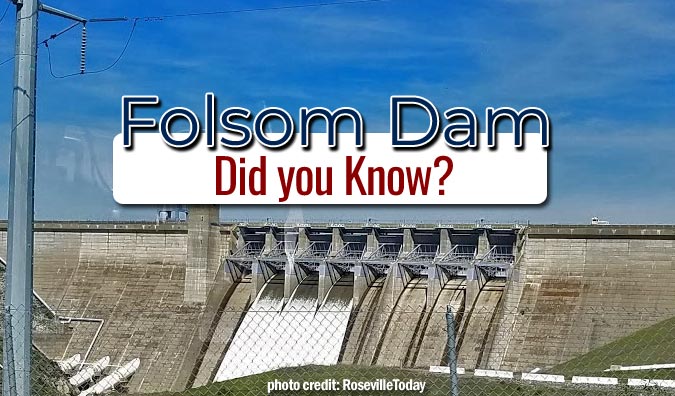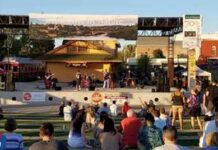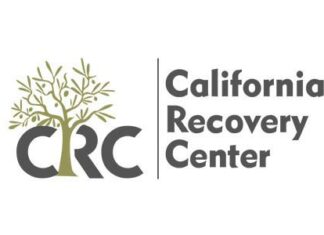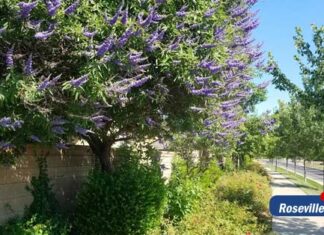Bureau of Reclamation provides some answers
Folsom, Calif.- Completed in 1956 by the U.S. Army Corps of Engineers, the Folsom Dam and Reservoir is designed to reduce flooding damage and protect Sacramento and surrounding areas that reside in a flood plain. Folsom Dam and Reservoir also produces hydroelectricity, helps maintain water quality in the Bay Delta, and provides recreation and water for local municipal agencies, including Folsom.
City of Folsom staff regularly receives inquiries about dam and reservoir operations, including: Who is responsible for water releases at Folsom Reservoir? What determines when and how much water is released? Why is water still released during drought conditions?
Folsom Dam & Reservoir: Frequently Asked Questions
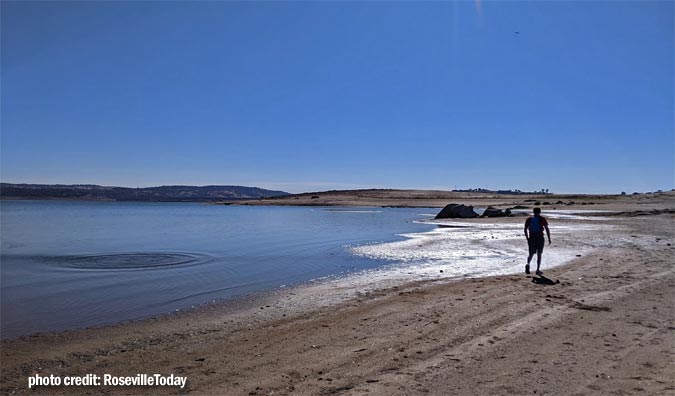
1- What is the function of Folsom Dam – Why was it built?
Completed in 1956 by the U.S. Army Corps of Engineers, flood damage reduction is the authorized purpose for Folsom Dam and Reservoir. Sacramento and surrounding areas reside in a flood plain that relies on a state-federal flood control system designed to keep floodwaters away from people and property. The project is operated by the Department of the Interior’s Bureau of Reclamation as part of the Central Valley Project, serving water supply demands in the state of California.
Additionally, Folsom Dam and Reservoir produces hydroelectricity, helps maintain water quality in the Bay Delta, provides recreation and water for local municipal agencies.
2 – Who is responsible for releases?
Reclamation is responsible for daily operations and releases at Folsom Reservoir. It’s operated as part of one, integrated CVP system, which includes Trinity, Shasta, New Melones and Millerton reservoirs.
Reclamation releases water from Folsom for many reasons including water supply, water quality in the Delta (primarily to prevent salinity intrusion from the Pacific Ocean), and for endangered and threatened species. Reclamation has had contracts with the following agencies for water supply from Folsom Reservoir: El Dorado Irrigation District, City of Roseville, Sacramento County Water Agency, Sacramento County (assignment from SMUD), San Juan Water District, East Bay Municipal Utility District, Sacramento Municipal Utility District, Placer County Water Agency, and City of Folsom.
3 – What determines when/how much water is released?
Determining how much water to release from Folsom and the other CVP reservoirs is constantly being assessed in coordination with numerous agencies including the California Department of Water Resources, State Water Resources Control Board, California Department of Fish and Wildlife, National Marine Fisheries Service, U.S. Fish and Wildlife Service, and the Corps. Reclamation also coordinates CVP operations with 271 CVP contractors, 80 Preference Power customers, numerous environmental groups, federally recognized tribes, and Native American groups in an effort to jointly maximize the operational flexibility of both the CVP and California’s State Water Project.
Reclamation bases overall CVP reservoir operations and releases-including Folsom Reservoir-on a number of legal, contractual, and regulatory requirements and takes into consideration projected runoff forecasts throughout the Central Valley that cover a range of future wet and dry conditions. The latest weather forecasting information, current and forecast reservoir storage and inflow data, and snowpack accumulation are all used to help determine appropriate reservoir releases at any given point in time.
4 – Who controls Folsom Dam during flood operations?
Reclamation is responsible for managing releases when reservoir levels go above seasonal thresholds, also called flood operations; however, several considerations which Reclamation considers include close coordination and agreements with other agencies.
The Corps, with input from local, state and federal agencies, developed and updated a comprehensive “owner’s manual,” the Water Control Manual. Within the manual is a diagram that defines seasonal reservoir storage volumes to leave empty in the fall, winter and spring, and reservoir release requirements in order to reduce flood risk.
Between the two agreements is a built-in flexibility upon which Reclamation and the Corps collaborate when reservoir operations must consider dam safety guidelines. Dam safety data for Folsom and other reservoirs may be found on this website.
The goal is to strike a balance between multiple purposes without compromising public safety and the protection of property downstream. Reclamation considers these agreements, along with other operational demands, as well as the latest forecast/current conditions to help inform its release decisions.
5 – Why is water still released during drought conditions?
During drought, releases are scaled back to conserve storage when inflows are poor; however, water still needs to flow downstream to maintain the fishery habitat per federal and state regulatory requirements and for other downstream demands, which include seasonal water supply needs, water right requirements, regulatory requirements and biological considerations.
Folsom is one of the smallest CVP reservoirs with one of the highest refill potentials; this means it can fill quickly and frequently. Enough water passes through the reservoir to fill and empty it 2-3 times in a wet year. Inflow from the Sierras needs to be appropriately managed as snow melts in the spring and runs downstream into Folsom Reservoir. Basically, storage conditions at the reservoir need to be at an appropriate level in the fall to prepare for the upcoming rain or snow season.
6- What are safety protocols for recreating on the lake and who establishes, and enforces it?
Safety protocols for recreating on the lake include speed restrictions to no faster than 5 miles per hour within 200 feet of a shore, boat launch, or mooring area, in areas so posted by buoy, or in other areas subject to the California Harbors and Navigation Code. During low water times, when water levels fall below a mean surface elevation of 400 feet, speed on Folsom Lake is restricted to no faster than 5 miles per hour. This restriction is a safety action to prevent high-speed collisions with underwater obstructions.
In regard to swimming, all areas of Folsom Lake are available to swimming except those adjacent to on-water marina structures and boat ramps, and those areas secured by barrier at the Folsom Dam spillways. The California Department of Parks and Recreation (State Parks) administers lands around Folsom Lake for recreational purposes under a management agreement with the Bureau of Reclamation. State Parks is responsible for enforcing the California Harbors and Navigation Code and implementing safety adjustments to recreational operations. State Parks regularly provides updated orders regarding recreational operations through the Folsom Lake State Recreation Area website at Folsom Lake SRA (ca.gov).
California Reservoirs, Snowpack & Drought
(21+ years strong)
Welcome to the brighter side!
Get in front of local customers! 24/7 (365)



